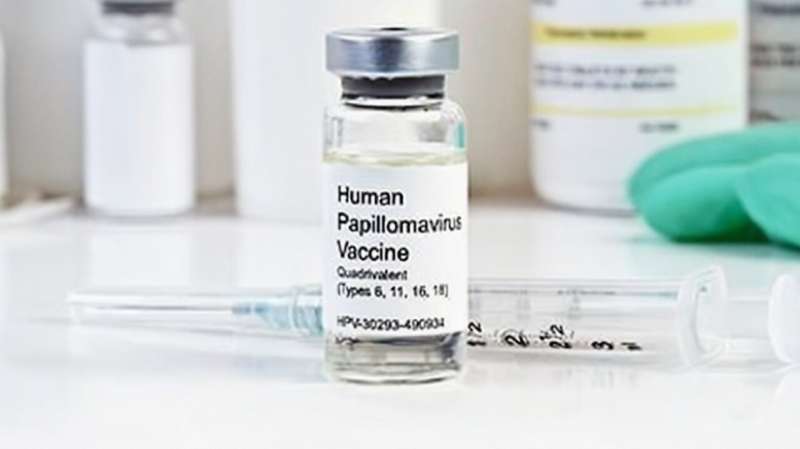This article has been reviewed according to Science X's editorial process and policies. Editors have highlighted the following attributes while ensuring the content's credibility:
fact-checked
peer-reviewed publication
reputable news agency
proofread
Best way to prevent cervical cancers: Immunize boys against HPV, too

The best way to prevent cervical cancer in women is to give HPV vaccines to both boys and girls, a new study argues.
That way, herd immunity could help eradicate the cancer-causing virus, researchers say.
Cancer-related HPV strains declined significantly in Finnish towns where boys and girls both received the vaccine, according to findings published Nov. 8 in the journal Cell, Host and Microbe.
"This shows that you get stronger herd immunity if you vaccinate both boys and girls," said lead researcher Dr. Ville Pimenoff, docent of evolutionary medicine at the Karolinksa Institute in Sweden.
"According to our calculations, it would take 20 years of vaccinating girls to achieve the same effect that can be achieved in eight years with a relatively moderate vaccination coverage rate of gender-neutral vaccination," Pimenoff added in a Karolinska news release.
The U.S. Food and Drug Administration first approved the HPV vaccine for use in girls in 2006. In 2011, the U.S. Centers for Disease Control and Prevention broadened its recommendation to include boys as well.
For this study, researchers examined how vaccination could protect against specific HPV strains linked to cancer.
There are more than 200 types of human papillomavirus, researchers explained in background notes. Some types can give rise to different kinds of cancer, with cervical cancer being the most common.
The vaccine used at the time of the study protected against HPV types 16 and 18, which cause 70% of all cervical cancers. It also provides cross-protection against HPV types 31 and 45, which can cause some cervical cancers.
For the study, 33 different towns in Finland were randomly assigned to vaccinate both boys and girls, vaccinate girls only or offer no vaccination at all.
The study included children born between 1992 and 1994, who were followed up at four and eight years after vaccination.
"The fact that the HPV vaccine study randomized the communities to different treatment programs is what enabled us to study the effects of vaccination," Pimenoff said.
Eight years after vaccination, HPV types 16 and 18 had declined significantly in the 22 towns in which the vaccine was provided.
There also was a decrease in HPV 31 in the 11 towns that only vaccinated girls, while in the 11 towns that vaccinated boys and girls there was a clear decline in both HPV 31 and 45.
Researchers also found that cancer-causing HPV types eliminated by the vaccine were replaced by other HPV types not strongly linked to cancer.
"The HPV vaccine is effective against the high oncogenetic [cancer-causing] HPV types, and studies, including our own, show that there is no reason to be concerned about the observed increase of low oncogenetic HPV types since they very rarely cause cancer," Pimenoff said.
HPV vaccines now target nine different virus types, the researchers noted.
More information: Ville N. Pimenoff et al, Ecological diversity profiles of non-vaccine-targeted HPVs after gender-based community vaccination efforts, Cell Host & Microbe (2023). DOI: 10.1016/j.chom.2023.10.001
Copyright © 2023 HealthDay. All rights reserved.




















